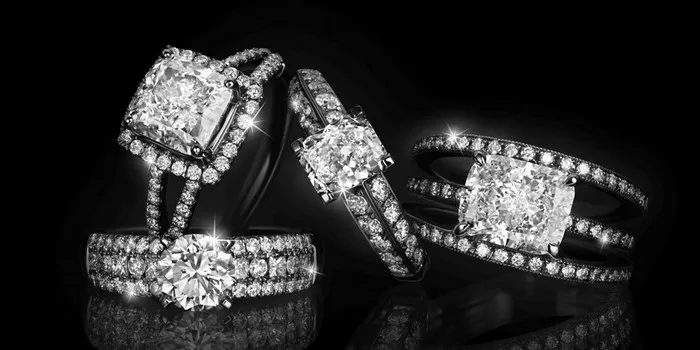Diamonds have long been synonymous with luxury, rarity, and enduring value. For centuries, these precious gemstones have captivated hearts and adorned the most significant moments in people’s lives. However, the dynamics of the diamond industry have undergone significant changes in recent times, leading to a situation where diamond jewelry is more affordable than ever before. This article delves into the factors contributing to this shift, explores the implications for consumers and businesses, and examines the future outlook for diamond prices.
Historical Context: From Rarity to Accessibility
Historically, diamonds have been marketed as rare and exclusive, driving their prices up and creating a perception of inherent value. De Beers, the iconic diamond mining company, famously controlled the global diamond supply for decades, carefully managing production to maintain high prices. This strategy ensured that diamonds retained their allure as symbols of wealth and status.
Changing Supply Dynamics
One of the key factors influencing the current affordability of diamond jewelry is the evolution of global supply chains. The diamond mining industry has seen significant changes with the discovery of new diamond deposits and advancements in mining technology. Countries such as Russia, Botswana, Canada, and Australia have emerged as major diamond producers, diversifying the global supply and reducing the traditional dominance of African mines.
Technological Advancements in Diamond Synthesis
Advances in technology have revolutionized the diamond market by enabling the production of high-quality synthetic diamonds. These lab-grown diamonds exhibit the same physical and chemical properties as natural diamonds but can be manufactured at a fraction of the cost. As technology improves and economies of scale come into play, the production costs of synthetic diamonds continue to decline, making them a more attractive option for consumers seeking value without compromising quality.
Shifting Consumer Preferences
Consumer preferences have also played a pivotal role in reshaping the diamond jewelry market. Millennials and Generation Z, who now represent a significant portion of the consumer base, tend to prioritize ethical sourcing, sustainability, and value for money in their purchasing decisions. This demographic shift has prompted jewelers to offer more transparent supply chains and competitively priced diamond alternatives, including lab-grown diamonds and recycled diamonds.
Impact of E-Commerce and Disruptive Retail Models
The rise of e-commerce platforms and direct-to-consumer brands has disrupted traditional retail models in the diamond industry. Online retailers have lower overhead costs compared to brick-and-mortar stores, allowing them to offer diamond jewelry at more competitive prices. Moreover, digital marketing and social media have empowered consumers with information, enabling them to compare prices and make informed purchasing decisions.
See Also: Which Zodiac Sign Can Wear Blue Sapphire: A Complete Guide
Economic Factors and Market Trends
Economic factors such as currency fluctuations, geopolitical events, and changes in consumer spending habits can influence diamond prices. During periods of economic uncertainty, consumer demand for luxury goods may decrease, putting downward pressure on diamond prices. Conversely, economic stability and growth can stimulate demand for diamond jewelry, leading to price fluctuations in the market.
Sustainability and Ethical Considerations
In response to growing consumer concerns about the environmental and ethical impact of diamond mining, industry stakeholders have embraced sustainability initiatives and ethical sourcing practices. Organizations like the Responsible Jewellery Council (RJC) promote responsible practices throughout the diamond supply chain, from mining to retail. Ethically sourced diamonds, whether natural or lab-grown, appeal to environmentally conscious consumers seeking assurance that their purchases align with their values.
The Role of Marketing and Perception
Perception plays a crucial role in the diamond market. Effective marketing campaigns have historically shaped consumer perceptions of diamonds as symbols of love, commitment, and prestige. As the industry evolves, marketers continue to innovate by emphasizing the emotional and symbolic value of diamond jewelry while adapting to changing consumer expectations regarding price transparency and product authenticity.
Future Outlook: Trends and Predictions
Looking ahead, the diamond jewelry market is expected to continue evolving in response to technological advancements, shifting consumer preferences, and global economic trends. The affordability of diamond jewelry is likely to persist as synthetic diamonds become more prevalent and traditional supply chains adapt to meet changing market dynamics. Sustainability will remain a key focus area, influencing both consumer demand and industry practices.
Conclusion
The decline in diamond jewelry prices reflects a complex interplay of factors, including changes in supply dynamics, technological innovations, shifting consumer preferences, and economic influences. While traditional natural diamonds retain their allure, the emergence of lab-grown diamonds has democratized access to high-quality gemstones. As the diamond industry navigates these transformations, stakeholders must adapt to meet the evolving expectations of consumers who prioritize value, sustainability, and ethical sourcing. By understanding the forces shaping the diamond market, businesses can position themselves to thrive in a landscape where affordability and authenticity are increasingly valued.

